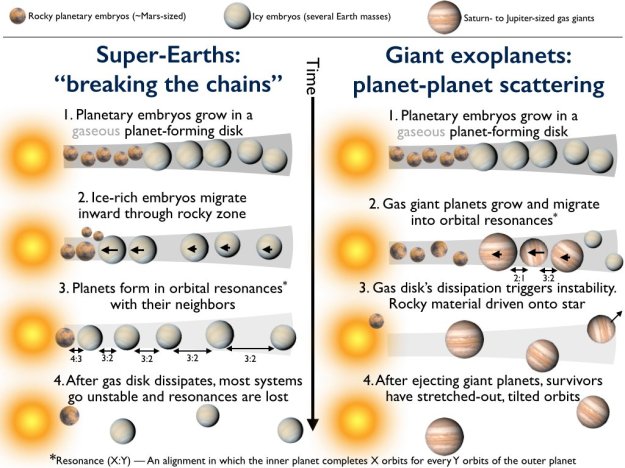Here’s a nice graphic by Sean Raymond illustrating different scenarios for the formation of exoplanetary systems, one leading to “Super-Earths” and the other to gas giants. The work is explained more fully on arXiv.

The paper’s figure caption includes:
Left: Evolution of the “breaking the chains” migration model for the origin of super-Earths. Embryos within the snow line are entirely rocky and much smaller than those that form past the snow line, which also incorporate ice. Presumably ice-rich embryos migrate inward through the rocky material, catalyzing the growth of purely rocky planets interior to the ice-rich ones. Planets migrate into long chains of mean motion resonances, with the innermost planet at the inner edge of the disk. The vast majority (90–95%) of resonant chains become unstable when the gas disk dissipates. The resulting planets match the distributions of known super-Earths.
Right: Evolution of the planet-planet scattering model for the origin of giant exoplanets. Several embryos grow quickly enough to accrete gas and grow into gas giants. They subsequently migrate into a resonant chain without drastically affecting the orbits of nearby growing rocky planets (or outer planetesimal disks). After the disk dissipates, the vast majority (75–90%) of giant planets systems become unstable. The resulting systems match the correlated mass-eccentricity distribution of known giant exoplanets.



